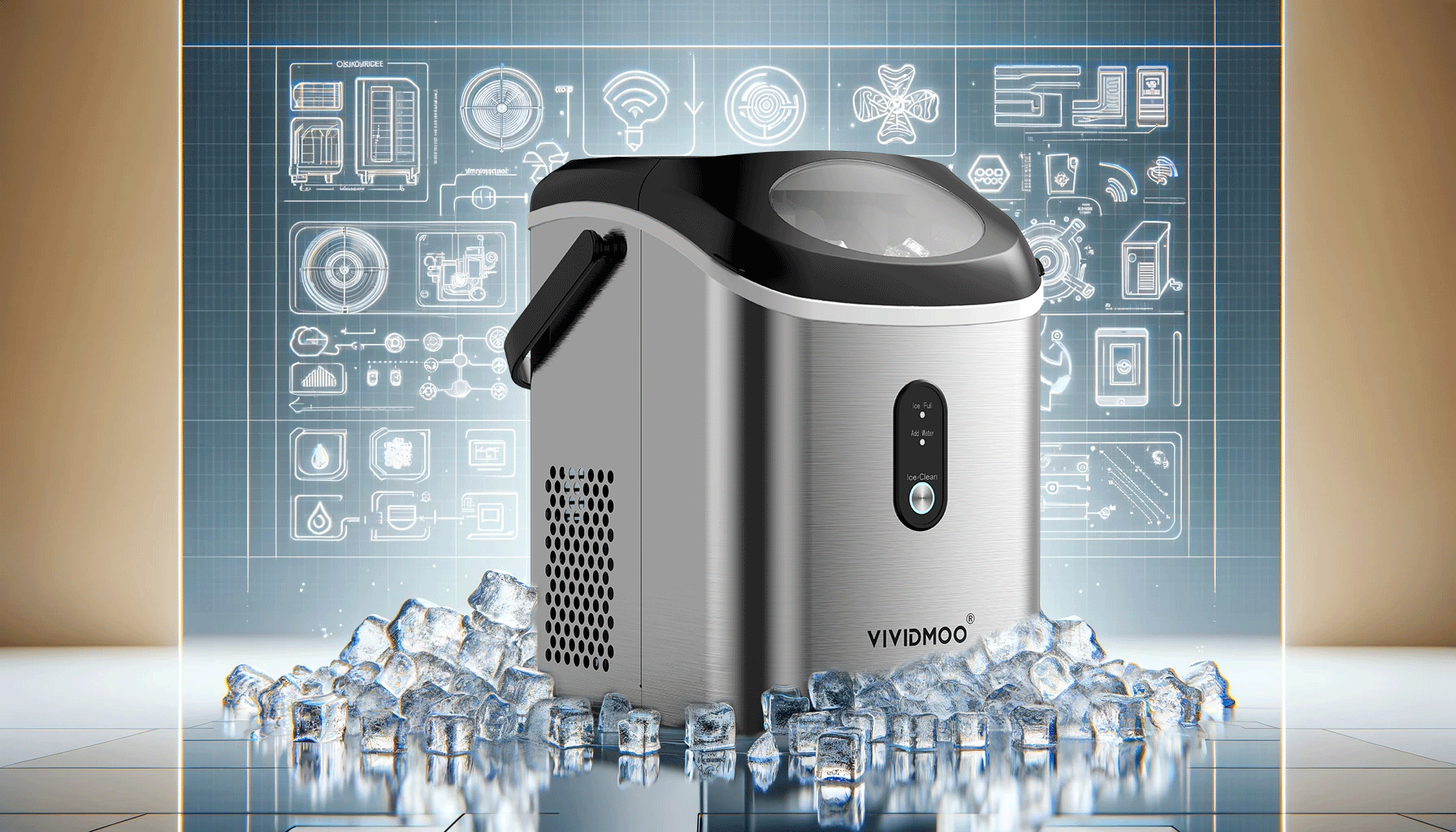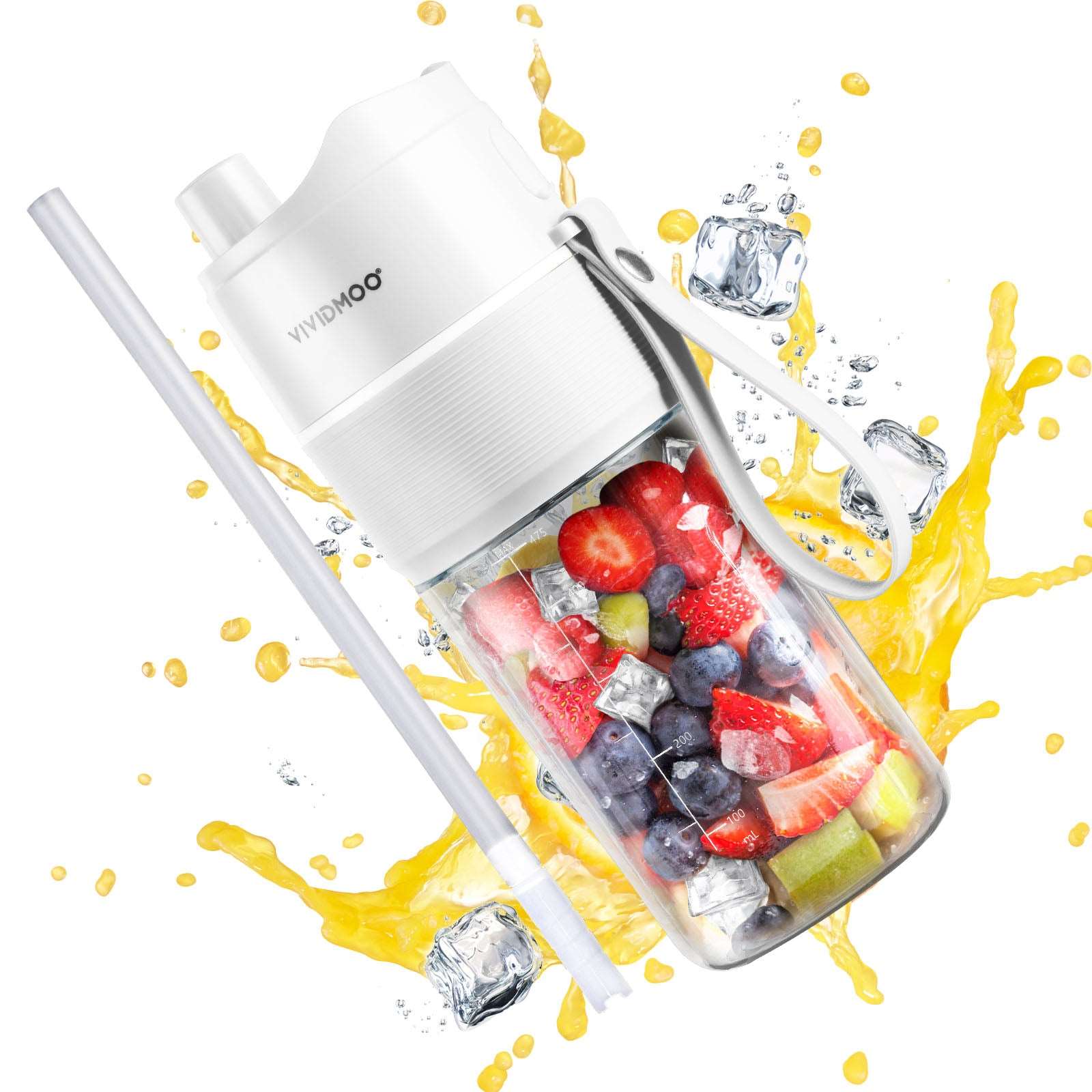
Breaking Down the Cost: The Comprehensive Guide to Nugget Ice Maker Pricing
Understanding What Influences the Price of Your Favorite Ice
In the quest for that perfect chewable, cloud-like nugget ice, investing in a nugget ice maker has become a popular choice for many. But what dictates the price tag of these specialized machines? This blog post delves into the intricate world of nugget ice makers, focusing on the core components that influence their cost, particularly highlighting the role of compressors, refrigerants, materials, and assembly layout.
Introduction
Nugget ice makers, adored for producing soft, chewable ice, have found their way into both commercial establishments and homes. However, the cost of acquiring one of these machines can vary significantly. To understand why let's explore the technical nuances and manufacturing intricacies that contribute to their pricing.
The Heart of the Machine: The Compressor
In the realm of nugget ice makers, the compressor is not merely a component; it's the heart that pumps life into the entire system. Its primary role is to compress the refrigerant and circulate it through the cooling system, a process fundamental to ice production. This critical function means the choice of compressor heavily influences both the performance and cost of the ice maker. Let's explore how the compressor's specifications and qualities impact the pricing of nugget ice machines.
Type and Efficiency
-
Rotary Compressors: Known for their compact size and efficiency in smaller applications, rotary compressors are often found in residential nugget ice makers. While they are cost-effective and sufficient for moderate use, their lifespan and durability might be less than other types, affecting the machine's overall value proposition.
-
Scroll Compressors: Scroll compressors offer a higher level of efficiency and quieter operation, making them a preferred choice for premium nugget ice makers, including commercial models. Their advanced design allows for continuous operation without the start-stop cycles that wear down other compressor types, translating into a higher initial cost but better long-term energy savings and reliability.
-
Piston (Reciprocating) Compressors: These compressors are valued for their durability and ability to work under high pressure, ideal for commercial settings where demand for nugget ice is constant. However, their complex design and robust construction mean a higher price point, both in terms of the compressor itself and the ice maker it powers.
Cooling Capacity
The compressor's cooling capacity directly correlates with the nugget ice maker's production capacity:
-
High Cooling Capacity: Compressors with a high cooling capacity can produce a larger volume of ice, catering to busy restaurants, bars, and healthcare facilities. These high-capacity compressors are more expensive due to the larger size, increased material cost, and advanced technology required to efficiently manage greater volumes of refrigerant.
-
Moderate to Low Cooling Capacity: Suitable for home or small office settings, these compressors are designed for less frequent use and lower ice production needs. While the cost is lower than their high-capacity counterparts, they provide an economical solution for users with moderate ice requirements.
Brand and Quality
The manufacturer of the compressor plays a crucial role in determining the quality and price of the nugget ice maker:
-
Premium Brands: Compressors from well-known, reputable brands often come with a higher price tag due to their proven track record of reliability, efficiency, and longevity. Investing in a nugget ice maker with a premium brand compressor can lead to lower maintenance costs and fewer operational issues over time.
-
Warranty and Support: The warranty and support services offered by the compressor manufacturer can also influence the ice maker's cost. Extended warranties and comprehensive support services offer peace of mind but can add to the initial purchase price.
The Role of Refrigerants in Nugget Ice Makers
Refrigerants are critical to the ice-making process, acting as the fluid that absorbs and releases heat within the system, thereby enabling ice formation. The choice of refrigerant not only impacts the environmental footprint of a nugget ice maker but also plays a significant role in the machine's efficiency, operational costs, and ultimately, its market price.
Types of Refrigerants and Their Impact on Price
-
Hydrofluorocarbons (HFCs): Traditionally used in many refrigeration systems, HFCs are being phased out due to their high Global Warming Potential (GWP). Ice makers using HFCs may be less expensive initially but could incur higher costs in the long run due to regulatory changes and the potential need for retrofitting to more eco-friendly options.
-
Hydrocarbons (HCs) like R290 (Propane): Known for their low GWP, hydrocarbons are becoming the refrigerant of choice for newer models of nugget ice makers. Machines utilizing HCs are often more expensive upfront due to the advanced technology required to safely handle these substances and their superior efficiency. However, they offer lower operational costs and are less likely to be impacted by environmental regulations.
-
Isobutane (R600a): Another low-GWP refrigerant, R600a, is used in some compact and residential nugget ice makers. While offering similar benefits to R290 in terms of efficiency and environmental impact, the use of R600a can contribute to a slightly higher price point due to its specialized handling requirements and the technology needed for its application.
Refrigerant System Design
The design of the refrigerant system, including how efficiently it circulates the refrigerant and its ability to minimize leaks and maintain optimal pressures, also affects the price of the ice maker. Systems designed for higher efficiency and minimal environmental impact require precision engineering and high-quality components, contributing to a higher cost:
-
Advanced Circulation Systems: These systems ensure the most efficient use of refrigerant, reducing waste and energy consumption. The incorporation of such systems can raise the initial cost of the ice maker but result in significant savings in utility bills.
-
Leak Prevention Technologies: Features designed to detect leaks early or prevent them altogether are becoming more common in high-end nugget ice makers. These technologies protect the investment and ensure the system's longevity but add to the cost due to the additional sensors and control mechanisms involved.
The role of refrigerants in nugget ice makers extends beyond simply cooling; it directly influences the machine's efficiency, environmental impact, and cost. As regulations and market preferences continue to evolve towards more sustainable options, the choice of refrigerant and the design of the refrigerant system are becoming increasingly important factors for consumers to consider when purchasing a nugget ice maker.
Materials and Construction: Building the Foundation of Nugget Ice Makers
The materials used in constructing a nugget ice maker and its overall build quality are fundamental aspects that directly influence both its durability and cost. From the exterior housing to the internal components, the choice of materials determines the machine's resilience to wear and tear, its aesthetic appeal, and its ability to maintain optimal performance over time. Let's delve into how these factors affect the price of nugget ice makers.
Exterior Housing
-
Stainless Steel: Many high-end nugget ice makers feature stainless steel exteriors for their corrosion resistance, durability, and sleek appearance. Stainless steel, however, is more expensive than other materials, contributing to a higher price point for machines that use it extensively.
-
Plastic and Composites: Lower-cost models might opt for high-quality plastic or composite materials for the exterior housing. While these materials can still offer good durability and aesthetics, they are generally less expensive than stainless steel, making the ice maker more affordable but potentially less durable over the long haul.
Internal Components
-
Food-grade Metals for Ice-making Components: The materials used in the ice-making components, such as the evaporator and ice mold, are critical for ensuring the ice's safety and taste. High-quality, food-grade metals like nickel-plated copper or stainless steel are preferred for their non-reactive properties and longevity. These premium materials add to the unit's manufacturing costs but ensure the ice produced is of the highest quality.
-
High-quality Insulation: Effective insulation is crucial for maintaining the temperature within the ice maker and ensuring efficient operation. Polyurethane foam is commonly used for its excellent insulating properties; however, the quality and thickness of the insulation can vary. Higher-quality insulation contributes to a higher cost but results in better energy efficiency and ice production rates.
Assembly and Build Quality
-
Precision Engineering and Assembly: The way in which a nugget ice maker is designed and assembled can significantly impact its performance and durability. Precision engineering and assembly ensure that all components fit perfectly, minimizing the risk of leaks or mechanical failures. This level of craftsmanship requires skilled labor and quality control processes, which can increase the price of the machine.
-
Modular Design for Easy Maintenance: Some nugget ice makers feature a modular design, allowing for easier access to internal components for maintenance and repairs. This design approach can make the initial purchase more expensive due to the additional planning and manufacturing complexity. However, it offers long-term savings by facilitating easier servicing and potential upgrades.
Material Choices and Construction: A Balancing Act
The materials and construction of a nugget ice maker play a crucial role in determining its price, performance, and longevity. High-quality materials like stainless steel and food-grade metals, along with precision assembly and thoughtful design, contribute to a higher cost. However, these investments in quality ensure that the machine not only performs efficiently but also stands the test of time, providing value to the user over many years.
Investing in a nugget ice maker with superior materials and construction is a decision that pays dividends in reliability, efficiency, and satisfaction. As we explore the nuances of what goes into building these machines, it becomes clear that the initial cost is just one part of the overall value equation.
Layout and Assembly: The Blueprint of Nugget Ice Maker Efficiency
The layout and assembly of a nugget ice maker are pivotal in determining not only its efficiency and performance but also its maintenance needs and longevity. These factors, intricately linked to the machine's design and manufacturing process, play a crucial role in the final cost of the product. A well-thought-out layout and meticulous assembly process ensure the machine operates optimally, providing consistent, high-quality nugget ice with minimal downtime.
Efficient Space Utilization
-
Compact Design: Manufacturers strive to design nugget ice makers that make efficient use of space, especially for models intended for home or small business use where footprint is a concern. Achieving a compact design without compromising on ice production capacity requires precision engineering, which can increase the cost. The complexity of designing a machine that fits components tightly yet remains accessible for maintenance adds to the manufacturing expenses.
-
Ventilation and Heat Dissipation: Proper layout is crucial for adequate ventilation and heat dissipation, ensuring the machine operates efficiently and prolongs its lifespan. Models designed with optimal airflow pathways prevent overheating and reduce energy consumption but may require more sophisticated manufacturing techniques, impacting the price.
Modular vs. Integral Construction
-
Modular Design: Modular nugget ice makers, which allow for individual components to be removed, serviced, or replaced without disrupting the entire system, offer significant advantages in terms of maintenance and longevity. However, designing and manufacturing a machine with modular capabilities can increase initial costs due to the additional complexity and higher-quality components required.
-
Integral Units: In contrast, integral units are often less expensive upfront but may pose challenges for repair and maintenance, potentially leading to higher long-term costs if significant components fail and require professional service or complete replacement.
Assembly Quality and Labor
-
Precision Assembly: The quality of assembly is critical for ensuring that all parts of the nugget ice maker work together seamlessly. Precision assembly minimizes the risk of leaks, mechanical failures, and inefficiencies, but it requires skilled labor and rigorous quality control processes, contributing to a higher manufacturing cost.
-
Automated vs. Manual Assembly: The degree to which the assembly process is automated versus manually conducted impacts the cost. Automated assembly lines can reduce labor costs and improve consistency but require significant investment in machinery and technology. Manual assembly, while potentially offering higher precision for certain components, involves higher labor costs, which can be reflected in the final price of the ice maker.
Impact on Pricing
The thoughtful layout and diligent assembly of a nugget ice maker are indicative of a manufacturer's commitment to quality and efficiency. These elements contribute significantly to the machine's performance, maintenance ease, and durability. While they may increase the initial purchase price, they are indicative of the machine's overall value, potentially offering savings through reduced energy consumption, fewer repairs, and a longer service life.
Understanding the intricacies of layout and assembly underscores the importance of considering more than just the upfront cost when investing in a nugget ice maker. It highlights the balance between initial investment and long-term value, guiding consumers towards making informed decisions that meet their needs and budget.
Innovative Features and User-Friendly Additions
The evolution of nugget ice makers has seen a significant shift towards incorporating innovative features that enhance user convenience, efficiency, and the overall ice-making experience. These features, while contributing to the utility and appeal of the machine, also play a role in shaping its price.
Smart Technology Integration
-
Wi-Fi Connectivity and App Control: Modern nugget ice makers increasingly offer Wi-Fi connectivity, allowing users to monitor and control their machine via a smartphone app. This convenience feature lets users adjust settings remotely, receive maintenance reminders, and even troubleshoot minor issues. The integration of smart technology requires additional hardware and software development, contributing to a higher cost.
-
Voice Assistant Compatibility: Compatibility with voice assistants like Amazon Alexa or Google Assistant adds a layer of convenience for users who prefer voice commands to control their appliances. Incorporating this technology involves not just the physical components but also the software integration and licensing agreements, which can elevate the price.
Eco-Friendly and Energy-Saving Features
-
Energy Efficiency: Machines designed with energy-saving modes and optimized refrigeration cycles use less electricity, appealing to environmentally conscious consumers and those looking to reduce operational costs. The research and development required to achieve high energy efficiency standards can increase the initial price of the ice maker.
-
Water Conservation Technologies: Some high-end nugget ice makers come equipped with water-saving technologies that recycle meltwater back into the ice-making process. This feature not only conserves water but also enhances the machine's efficiency. Implementing these systems necessitates advanced plumbing design and precision manufacturing, impacting the final cost.
User-Centric Design
-
Self-Cleaning Functions: Features like automatic cleaning cycles simplify maintenance, ensuring the ice maker remains hygienic with minimal user effort. The inclusion of self-cleaning technology requires additional components and programming, adding to the cost.
-
Customizable Ice Texture: The ability to adjust the nugget ice's texture, from soft and chewy to slightly harder, caters to personal preferences and different beverage types. This customization feature demands sophisticated control mechanisms and sensors, influencing the price.
Balancing Features with Cost
While these innovative features and user-friendly additions enhance the functionality and convenience of nugget ice makers, they also contribute to a higher price point. Manufacturers must balance the desire to incorporate advanced technologies with the need to keep the machines accessible to a broad range of consumers.
Consumers, in turn, must weigh the benefits of these features against their budget, considering not just the upfront cost but also the potential savings in energy and water consumption, and the added convenience that these features bring to their daily lives.
The inclusion of smart technology, energy-saving measures, and user-centric designs in nugget ice makers represents the industry's response to consumer demand for more efficient, convenient, and sustainable appliances. As technology continues to evolve, these features will likely become more prevalent and affordable, reshaping expectations for what a nugget ice maker can provide.











